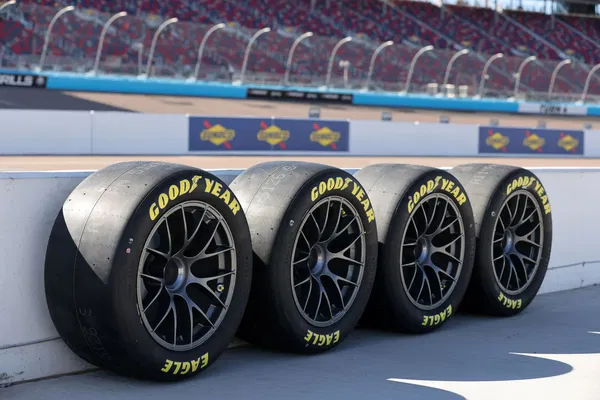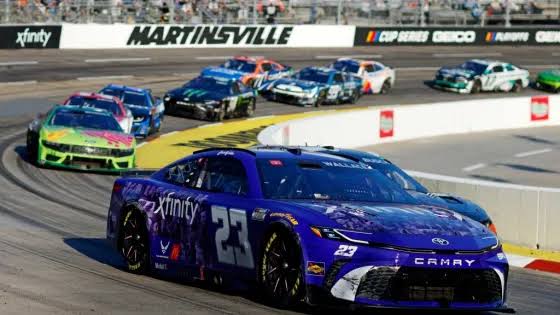Bristol Motor Speedway was the site of an intriguing Cup Series race under the lights this past Saturday, with significantly fewer lead changes than seen earlier in the season. Yet, despite the reduced action, the race turned out to be the fastest ever held at the historic track, which first opened in 1961. With an average speed of 101.277 MPH, the 2024 Bass Pro Shops Night Race surpassed the 2024 Food City 500 by 20 miles-per-hour. However, this record-breaking pace didn’t translate into fan satisfaction, with many attendees feeling underwhelmed by the event.
Questions swirled among fans about the cause of the race’s lackluster reception. Some wondered if it was due to the dominance of Kyle Larson, who led the majority of the laps, or if it was the near absence of tire wear. The night’s tire performance, especially compared to the tire fall-off seen in the March race at Bristol, became a hot topic of debate. The spotters from the Door Bumper Clear podcast weighed in on the issue, shedding light on the confusion and controversy surrounding Goodyear’s tires.
Breaking Down the Tire Issue at Bristol
The Bristol Spring Race of 2024 was a peculiar one, with drivers and teams grappling with unexpected tire degradation. Earlier that season, NASCAR replaced the PJ1 Trackbite compound with a resin treatment for the March race. The switch led to significant tire wear after only 30 to 40 laps on Bristol’s warm concrete. Tire codes D-5170 for the right side and D-5206 for the left were a major topic of discussion after the race, as their performance created a situation that many believed might never happen again.
In March, Denny Hamlin’s team managed the conditions better than most, securing his second consecutive win at Bristol. Fast forward to the Night Race, Goodyear brought the same tire codes, but the tire wear was noticeably different. Even Kyle Larson, who dominated the night, pointed out how things felt off during practice, which likely contributed to his near-total control of the race. Denny Hamlin, who finished fourth, was vocal about the inconsistencies with the tires after the race, criticizing their performance.
Hamlin complained, “It [the tires] either doesn’t last 40 laps, or it lasts 200.” He argued that inconsistency with the tires made it difficult for drivers to pass, as all cars and drivers were evenly matched. Hamlin wasn’t the only one to voice his concerns—other drivers, crew chiefs, and even fans debated whether the problem stemmed from NASCAR, the track owners, or Goodyear.
Spotters Weigh In
During a segment on Door Bumper Clear, a fan asked whether the tire debate would carry into the next season. Brett Griffin, a former Cup Series spotter, dismissed the question, explaining that Goodyear holds a monopoly on NASCAR tires and controls what the teams race with. While Goodyear may take input from NASCAR and teams, the tires ultimately remain their decision. TJ Majors, another spotter, added that having two races at Bristol with the same tire but completely different results provided more data to analyze and possibly improve future tire performance.
Both Majors and Griffin acknowledged that predicting tire behavior at a track like Bristol is incredibly difficult. After a practice session that showed issues with the surface, NASCAR applied a layer of PJ1 Trackbite to the bottom groove and cleaned excess rubber from the top lane. Drivers initially believed that the PJ1 would lead to more tire wear on the cooler race surface, but the lower groove quickly became the preferred line, leaving most drivers attempting to pass on the inside.
Only Ty Gibbs, whose tires overheated late in the race, experienced tire issues that impacted his performance. His troubles, compounded by a speeding penalty, effectively ended his championship hopes for the season.
A Lingering Mystery
Experts across the sport—from drivers like Denny Hamlin to spotters and crew chiefs—had their opinions on what might have caused the race’s issues. Griffin pointed out that something bigger than just tires seemed to be affecting short-track racing at places like Bristol. Even Dale Earnhardt Jr.’s spotter mentioned that teams had to adjust their setups significantly to protect their right-front tires, possibly leading to some of the strange outcomes.
Chase Briscoe’s crew chief, Drew Blickensderfer, noted that the tire tests leading up to the night race seemed consistent with what was expected. However, once the race took place, it became clear that something wasn’t aligning with expectations. Mike Kelley, Ricky Stenhouse Jr.’s crew chief, echoed these sentiments, calling the Spring Race an anomaly and suggesting that even though NASCAR and Goodyear insisted nothing had changed, the results told a different story.
Despite all the speculation, one thing remains clear: the 2024 Bristol Spring Race will go down as one of the more mysterious events in NASCAR history. It highlights the ongoing challenges with short-track racing under the Gen 7 car, especially regarding tire wear and passing opportunities. Fans and experts alike will continue to seek answers to these perplexing issues, but for now, Bristol’s tire debate remains an unsolved mystery.
Controversial Insider Shuts Down Bristol Tire Debate With Bold Goodyear Claim




